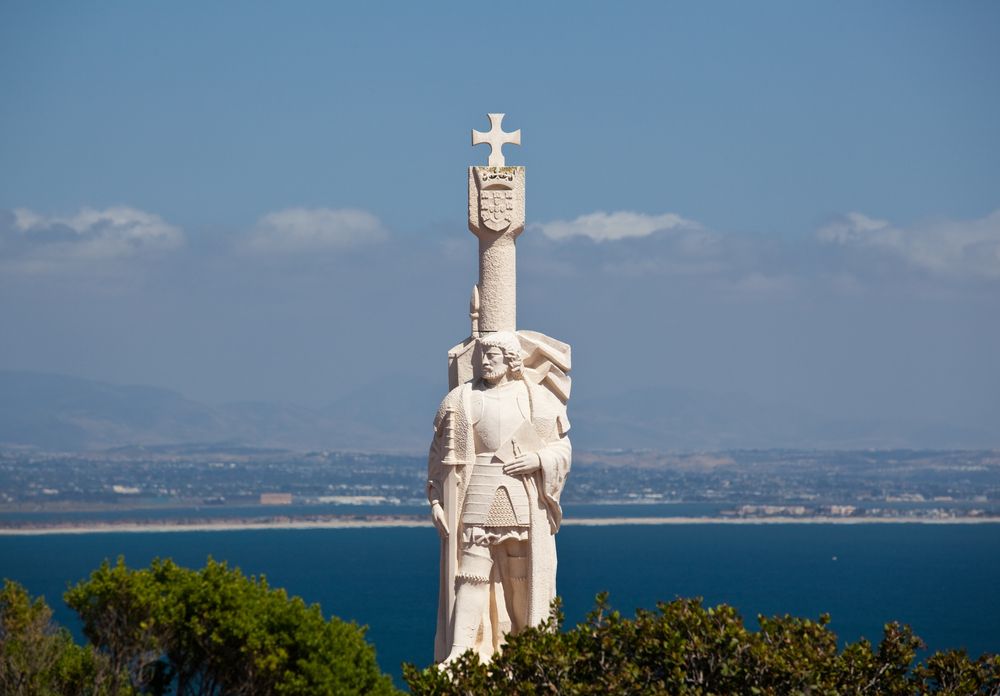Cabrillo National Monument preserves the southern tip of Point Loma Peninsula in San Diego and commemorates the September 28, 1542 landing of Juan Rodriguez Cabrillo at San Diego Bay.

Location
Perched on the southern tip of the Point Loma Peninsula in San Diego, California, Cabrillo National Monument offers sweeping views of the Pacific Ocean, San Diego Bay, and the city skyline. This historical site marks the landing spot of Juan Rodríguez Cabrillo, the first European to set foot on the West Coast of the United States in 1542.
Designation as a National Monument
Cabrillo National Monument was established on October 14, 1913, by President Woodrow Wilson. The monument commemorates Cabrillo’s historic voyage and celebrates the spirit of exploration and discovery.
Why Cabrillo is Protected
The monument is protected not only for its historical significance but also for its natural beauty and ecological importance. Cabrillo National Monument preserves the cultural heritage associated with Cabrillo’s exploration and provides a space for visitors to learn about the early history of European contact on the West Coast.
Additionally, the monument encompasses diverse ecosystems, including rocky intertidal zones, coastal scrub, and the Cabrillo Tide Pools. These habitats support a variety of plant and animal species, making the site an essential area for conservation and research.
Things to Do for Visitors
Cabrillo National Monument offers a variety of activities and attractions for visitors to enjoy:
- Exploring the Visitor Center: The visitor center features exhibits on Cabrillo’s voyage, the natural history of the area, and the significance of the monument. Don’t miss the film presentations and the interactive displays.
- Old Point Loma Lighthouse: Built in 1855, the Old Point Loma Lighthouse stands as a beacon of the past. Visitors can tour the lighthouse and learn about its history and the lives of the keepers who maintained it.
- Tide Pools: The rocky tide pools at Cabrillo are a highlight for many visitors. During low tide, explore these fascinating pools to discover marine life such as sea anemones, starfish, crabs, and more.
- Whale Watching: From December to March, Cabrillo National Monument offers one of the best vantage points for spotting migrating gray whales as they travel along the Pacific coast.
- Hiking Trails: The monument features several scenic trails, including the Bayside Trail, which offers stunning views of San Diego Bay, the ocean, and the surrounding landscape. The Coastal Trail provides access to the tide pools and the rocky shoreline.
- Military History: The monument is also home to the remnants of coastal defense systems from World War II. Explore the bunkers and gun batteries that once guarded the entrance to San Diego Bay.
- Photography: With its panoramic vistas, historic structures, and diverse wildlife, Cabrillo National Monument is a paradise for photographers. Capture the beauty of the ocean, the lighthouse, and the vibrant sunsets over the Pacific.
Visiting Cabrillo National Monument is a journey through history, nature, and the spirit of exploration. Whether you’re delving into the past, observing marine life, or simply soaking in the breathtaking views, Cabrillo offers an enriching and memorable experience for all.
Plan your visit today and discover the wonders of Cabrillo National Monument!
Agate Fossil Beds
Aztec Ruins
Bandelier
Bears Ears
Cabrillo
Canyon de Chelly
Cedar Breaks
Colorado
Devils Postpile
Devils Tower
Dinosaur
Effigy Mounds
El Malpais
Florissant Fossil Beds
Fort McHenry
Fort Moultrie
Fort Pulaski
Fort Stanwix
Fort Sumter
George Washington Birthplace
Gila Cliff Dwellings
Grand Staircase-Escalante
Hovenweep
Lava Beds
Little Bighorn Battlefield
Misty Fjords
Montezuma Castle
Muir Woods
Natural Bridges
Ocmulgee
Organ Pipe Cactus
Pipestone
Pompeys Pillar
Rainbow Bridge
–
Russell Cave
Salinas Pueblo Missions
Scotts Bluff
Statue of Liberty
–
Sunset Crater Volcano
Tuzigoot
Vermilion Cliffs
White Sands
World War II Valor in the Pacific
Wupatki
